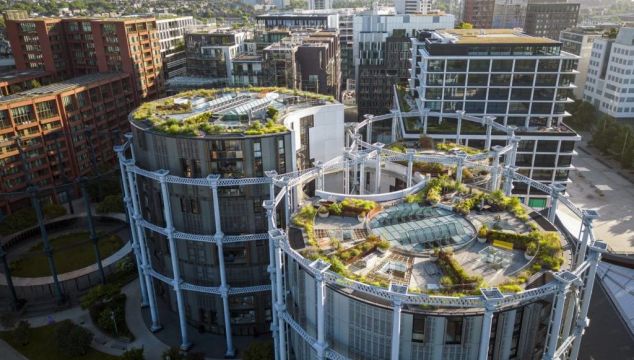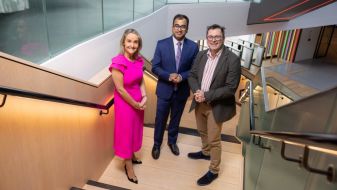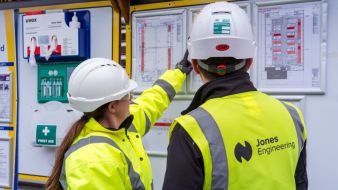Is there a standard definition of a green lease? i.e., is there an industry standard? And for a lease to be considered ‘green’, do the green clauses in the lease have to be legally binding? How is the tenant held accountable to these green standards?
Tackling the environmental, economic and social impact of climate change requires significant collaboration and transformation across all sectors including real estate. Over the last couple of decades, there has been an increased focus at EU, and at a national level on improving the energy efficiencies of buildings. This focus has accelerated in recent years with the introduction of the “near zero energy rating” concept for all new builds and certain renovations.
With climate change high on the agenda, many institutional landlords and global tenants are now focusing on sustainability, ensuring it is a core pillar of their operations. This emphasis on sustainability and energy efficiency is having a considerable impact on real estate investments as well as lettings. Improved environmental credentials are attracting an increasing number of tenants that focus on meeting their environmental, social and corporate governance (ESG) requirements.
In terms of standardisation, while there are international rating systems, there is no standard ‘green lease’ in Ireland, nor are there market-standard ‘green clauses’.
In addition, under the Irish Government’s Green Mandates all state occupiers are required, where feasible, to only occupy “green buildings” into the future. All of these factors have contributed to the emergence of what are termed ‘green leases’ in recent years.
The term ‘green lease’ means that the lease contains clauses placing co-operation obligations on both the landlord and the tenant aimed at promoting and improving a premises' environmental performance.
Green clauses can range from ‘dark green’ to ‘light green’, i.e., from clauses that, for example, include mandatory obligations not to undermine the energy rating of the building, to clauses that, for example, include a requirement to use reasonable efforts to recycle packaging consumed at the premises.

The use of ‘dark’ and ‘light’ green clauses offer parties more flexibility when incorporating measures relating to sustainability and energy efficiency into leases.
While the clauses are to be complied with to the highest extent possible, ultimately, they are seen as a collaboration between a landlord and a tenant, so a breach is not cause for termination. However, both parties should be working to maintain their commitment to the joint objective to play their part in reducing the environmental impact of the premise.
In terms of standardisation, while there are international rating systems, there is no standard ‘green lease’ in Ireland, nor are there market-standard ‘green clauses’. The green provisions that are appearing in commercial leases in the Irish real estate market are generally bespoke to the particular premises. The extent of green provisions is usually driven by both the landlord’s requirements having regard to the building, and the tenant’s own requirements in relation to sustainability, employee retention, and CSR policies. There is no one size fits all green lease that will be applicable to all organisations, but green leases are here to stay, and will become increasingly popular in the commercial real estate sector over the coming years.
There is no one size fits all green lease that will be applicable to all organisations, but green leases are here to stay, and will become increasingly popular in the commercial real estate sector over the coming years
What are the key considerations when entering a green lease? And what are the benefits for both landlords and tenants?
When drafting a lease, the most important consideration for a landlord is always protecting its investment. If a landlord has incurred additional costs to achieve a very high level of energy efficiency in a building, then they’ll want to ensure that any incoming tenant does not make any changes that would undermine the energy efficiency of the building, which in turn would impact the landlord’s investment.
By negotiating ‘green clauses’ into the lease, a landlord can benefit from protecting its investment by ensuring that there is a collaborative relationship with the tenant to meet the requirements necessary to preserve the energy efficiency of the building. There is also added value in bringing a building with a high energy rating to the market as it is very attractive to domestic and international funds who often must satisfy a sustainability requirement when sourcing new assets and tenants.
From a tenant’s perspective, buildings with high energy performance will result in lower utility costs over the term of a lease. Energy efficient buildings also tend to offer comfortable internal environments that are attractive to employees, which is a key benefit in a very competitive jobs market where employees are more aware of the importance of sustainability. And finally, many companies have set themselves corporate social responsibility requirements which can be part met by occupying a sustainable building.
What are the biggest challenges and opportunities for the property market when it comes to addressing sectoral emissions?
Recent figures show that buildings across Europe accounted for 40 per cent of total energy consumption in the EU and were responsible for 36 per cent of total emissions. These are startling statistics and demonstrate the impact that buildings have on the energy requirements of Europe.
It is clear that we must become greener and more efficient in Ireland. These recent figures also highlight the importance of achieving efficiencies within the construction sector and meeting our 2030 emission reduction targets. There is already a concept of “near zero energy buildings” provided for by the building regulations for new builds and certain renovations. The challenge will be to achieve even more efficiencies and in particular how to encourage investors to upgrade older building stock, through retro-fitting and other energy-proofing measures. Incentives may need to be introduced to encourage investors to take on the high costs of implementing these changes.
How do you see green leasing progressing over the next few years in Ireland?
Given the global dialogue on climate change and the current energy crisis, as well as legislation that is already in the pipeline at EU level and the current Government’s green agenda in Ireland, it is clear that ‘green clauses’ are going to continue to feature in Irish leases in the coming years. In fact, as more and more landlords and tenants focus on sustainability and energy efficiency measures, it is likely that ‘green clauses’ will become the norm in Irish leases. In time, landlords and tenants alike will gain experience from the practical application of the ‘green clauses’ and will refine their requirements. Landlords are likely to broaden tenants’ obligations and, conversely, tenants will have greater expectations from the buildings that they occupy. What remains to be seen is how the collaborative relationship between landlords and tenant plays out and how disputes are dealt with.
Kathi O Riain is a partner and head of Real Estate at Addleshaw Goddard (Ireland) LLPs.








